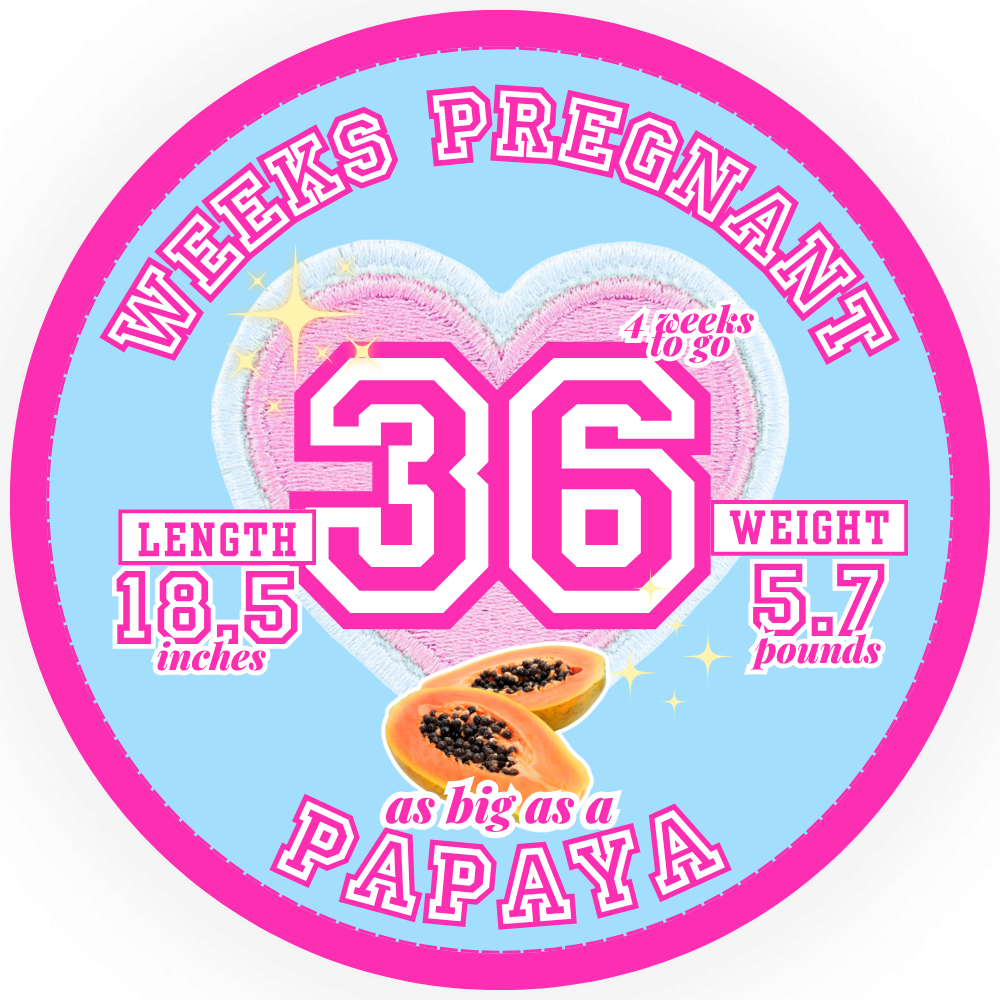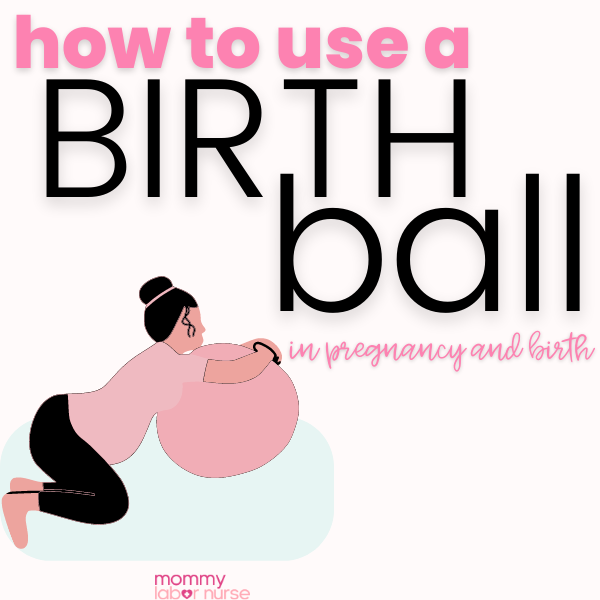
Baby’s growth and size
Baby is closing in on 6 pounds this week, weighing somewhere between 5.7 pounds and 6 pounds. As far as length goes, baby is just over 18.5 inches long.
What’s new developmentally?
Baby is growing like a weed (a really cute little weed though!). Baby’s bones are still a bit softer than adult bones, but they are hardening. Some of your baby’s bones are made of flexible cartilage that will gradually be replaced by bone throughout their childhood.
Fun fact: newborns are actually born with more bones than adults. Some of the bones fuse together over time. Speaking of bones, baby’s skull bones are developed but still haven’t fused, which will allow their head to pass through the birth canal more easily.
Depending on how long you push and how low your baby has been sitting at the end of your pregnancy, your baby may be born with a “cone head”. Don’t worry though, it reshapes quickly!
Fun facts about your week 36 baby
- Baby’s lungs are formed and ready to take their first breath
- Digestive system is fully developed
- Baby’s sleep wake cycle is becoming more developed
Things to avoid at 36 weeks pregnant
A lot of the things you should avoid at 35 weeks are things you should avoid throughout the rest of pregnancy as well.
Some of the obvious things include alcohol, raw or undercooked meat, seafood high in mercury, unpasteurized foods, unwashed fruits and vegetables, and excess caffeine.
Some things that might not be as obvious include questions regarding exercise, baths, natural induction methods, and sex during pregnancy – so let’s address these specifically:
- As long as your provider has not advised you to avoid warm baths during pregnancy, you should be totally safe to take a bath to help ease some of those pregnancy aches and pains.
- Similarly, sex should be safe throughout pregnancy as long as your OB provider has not advised you to refrain. And if you ever have any questions or doubts, definitely run it by your provider first.
- And what about exercise? It might be the very last thing on your mind right now but let’s talk about it just in case! Exercise during pregnancy actually has tons of benefits. If you have not been exercising throughout pregnancy, I recommend you start slow. Walking is a great one to start with – you can go at your own pace, make it as long or as short as you want. Plus, a little vitamin D can do wonders for you mentally!
- Avoid any kind of contact sports as well as anything super extreme – now is not the time to start training for that marathon you’ve always wanted to run.
- Finally, there are some natural induction methods that are safe to begin at this point in pregnancy but a lot of them should be avoided until you are closer to 39 or 40 weeks. Be sure to refer to slides 5-7 in this post and double check with your provider before putting any of these natural induction methods to use!
- The ones that should definitely be avoided prior to 37 – 40 weeks include curb walking, nipple stimulation (for induction purposes), midwives’ brew, primrose oil, miles circuit, membrane sweep, and reflexology (be sure to check the post for specific details.)
36 weeks pregnant and feeling pressure down below
Feeling an increased amount of pressure down below at this point? It’s not just in your head! It’s not uncommon for baby to drop lower into your pelvis as you get closer to your due date.
When this happens, you might notice certain pregnancy-related symptoms become more intense and more frequent with pelvic pressure being one of them. While it is a sign that your body is getting ready for labor, it’s not an indication of when labor will begin.
For some women, baby doesn’t drop until they are actually in labor so don’t get discouraged if you are near your due date and feel like baby is still pretty high.
At the end of the day, there’s nothing that can completely take away the discomfort and pressure associated with baby dropping lower into your pelvis. You can use a belly support band to relieve some of the pressure.
Swimming, a prenatal massage, a warm bath, or simply changing your position might also help!
36 weeks pregnant bloody show
Bloody show is vaginal discharge that is commonly seen during labor. It’s actually one of the few times in pregnancy that bleeding isn’t a cause for concern!
It is a combination of blood and mucus and can be red, pink and/or brown in color. Bloody show is a sign that the cervix is softening and dilating, which is why we most commonly see it during active labor and/ or transition.
It’s not uncommon to see a little bit of bloody show early in the labor process, but it’s more common after 4 cm.
So, what does it mean if you are 36 weeks pregnancy and experiencing bloody show? There’s a pretty good chance that your cervix is dilating, and you might be in labor.
Since you are considered preterm, less than 37 weeks, I would recommend promptly notifying your OB provider or going to your place of delivery for evaluation.
Baby born at 36 weeks pregnant
If you are experiencing bloody show at 36 weeks and possibly in labor, you might be wondering what happens if my baby is born at 36 weeks?
Considered late preterm, a baby born at 36 weeks has a very good chance of not only surviving but having minimal complications.
At 36 weeks, the risk of health complication decreases significantly and is even lower than babies born just a week earlier at 35 weeks. Just because *most* babies do well, with minimal complications at 36 weeks doesn’t guarantee that baby will completely avoid a NICU or special care nursery stay, even if it’s a brief one.
I say this as a reminder to not do anything to intentionally try and induce your labor at this point. Even though there’s a good chance your baby will have minimal complications if delivered at 36 weeks, they still are at an increased risk for certain complications compared to a baby born at 39 or 40 weeks.
These possible complications include difficulty regulating their temperature, low birth weight, jaundice, and respiratory complications.

.png?width=1500&height=300&name=logo%201500x300%20(1).png)


